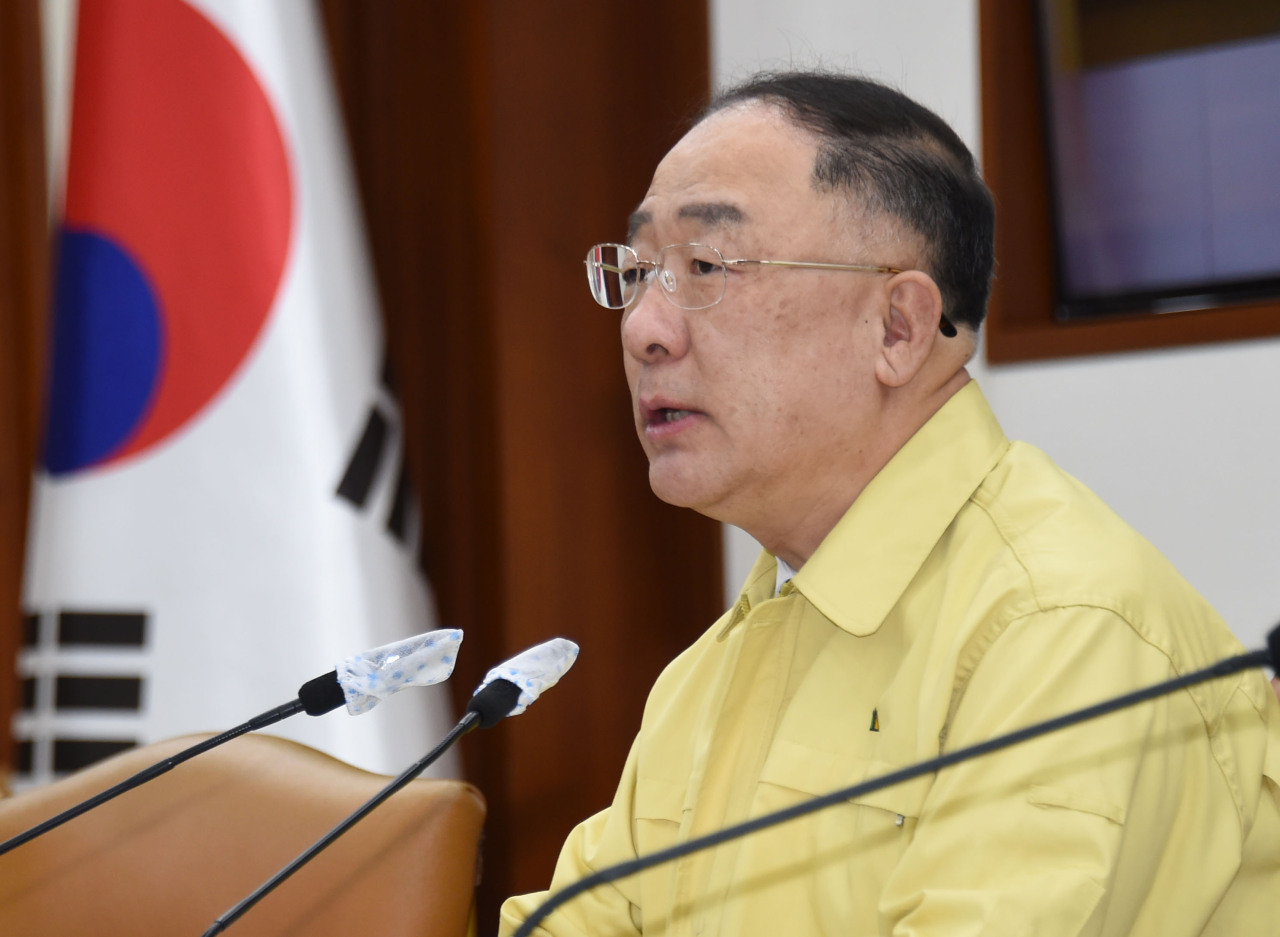 |
Deputy Prime Minister and Finance Minister Hong Nam-ki on Thursday chairs a meeting of economy-related ministers at Seoul Government Complex. (Yonhap) |
South Korea is likely to see a visible decline in job creation despite the government’s continued efforts to shore up the economy in the face of the novel coronavirus, according to the top fiscal policymaker on Thursday.
“There is a high possibility that unemployment may rise among part-time workers and small business owners,” said Deputy Prime Minister and Finance Minister Hong Nam-ki in a meeting of economy-related ministers held at Seoul Government Complex.
“The volume of applicants for unemployment allowances for March is estimated to far exceed that observed (in the same period) last year, and other job indexes have shown signs of slowing down.”
The regular ministerial meeting was expanded into a crisis management task force on March 18, a week after the World Health Organization defined the fast-spreading COVID-19 as a pandemic.
The number of new applicants for the state subsidies is expected to stand in the 150,000 range this month, up visibly from 125,000 posted a year earlier, according to the Ministry of Economy and Finance. The final figures are slated to be announced next week.
In February, the country paid out 781.9 billion won ($641.5 million) to job seekers. The amount, up 32 percent on-year, was a new high, surpassing the previous record of 758.9 billion won set in July last year.
“(The government) is carrying out a phased fiscal program worth 150 trillion won to respond to COVID-19,” Hong said, underlining that the top priority task is to safeguard jobs.
Bracing for a prolonged job market depression, Seoul’s government put forward four key policy pillars -- help companies sustain their current employment, offer fiscal and administrative support to discharged workers, create new jobs in the public and private sectors, and provide livelihood assistance to those struggling financially.
In the latest session, policymakers focused on expanding emergency child care funding for those who are forced to take unpaid leave from work, as their children face a delayed school semester.
“We plan to double the (range and amount of) special support funds for family care,” the fiscal chief said.
“The number of beneficiaries is expected to be around 120,000 households, up 30,000 from the current volume.”
Under the renewed blueprint, those who satisfy the requirements may receive up to 500,000 won for a maximum of 10 days. The current ceiling is 250,000 won for five days.
The necessary extra budget of 31.6 billion won will be paid from the government’s reserve funds, Hong added.
In a separate action, the country is working on a 9.1 trillion won plan to provide disaster relief to households in the lower 70 percent of the gross income spectrum.
By Bae Hyun-jung (
tellme@heraldcorp.com)








![[Today’s K-pop] Blackpink’s Jennie, Lisa invited to Coachella as solo acts](http://res.heraldm.com/phpwas/restmb_idxmake.php?idx=644&simg=/content/image/2024/11/21/20241121050099_0.jpg)